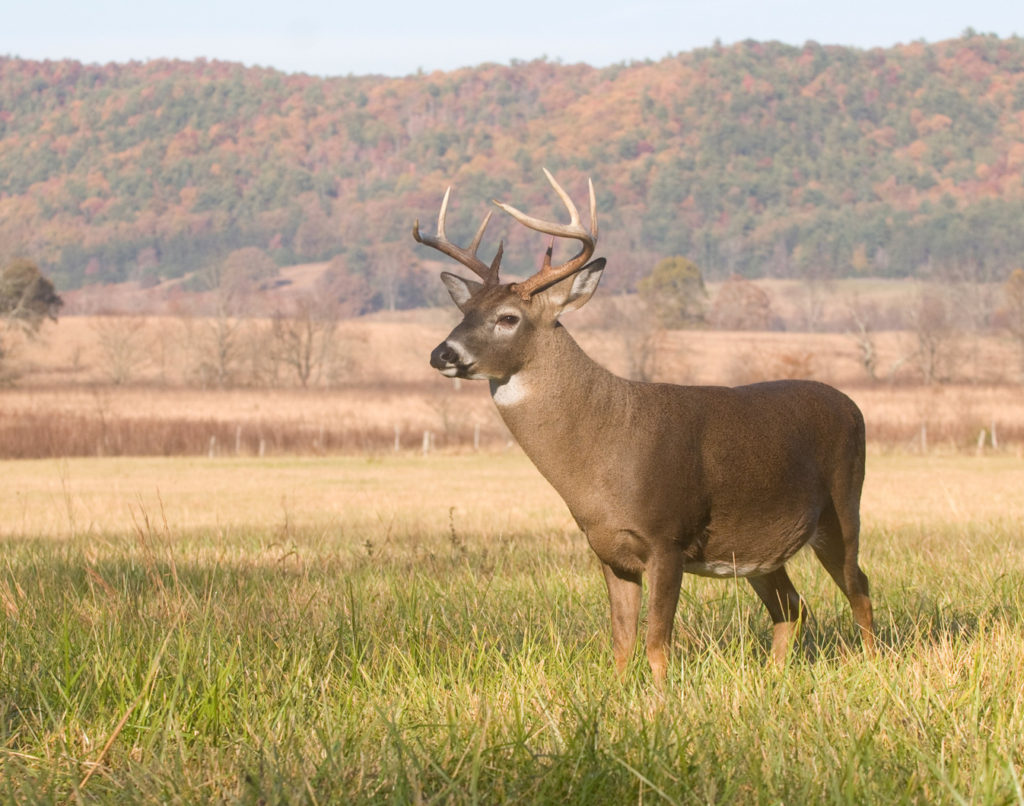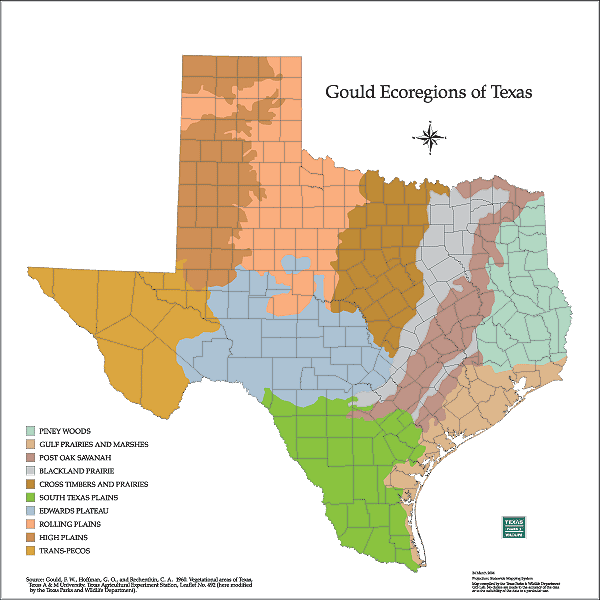
A whitetail buck stands in a meadow with a hillside with fall colors in the distance
Where are the BIGGEST DEER in Texas?
There is nothing like the classic campfire conversation, it happens every year. Where do the biggest bucks in the State of Texas come from? Obviously we’re only asking about outside of a high fence. Which magical region of the state has the best combination of genetics, nutrition, and age structure?
I’ve always known about the infamous “Golden Triangle” in South Texas. The Golden Triangle is the area between Laredo, Eagle Pass, and Cotulla. It provides incredible protein and boasts arguable some of the best genetics in the country. I’d also heard that despite the incredible deer harvested in this region that the bottomland hardwoods of the Trinity and Brazos rivers provided the cover and protein that storied bucks would need to reach massive proportions.
The good news is that we don’t need to rely on anecdotal data to understand which region reigns supreme. That’s because we have a large data set of reliable harvest data from each Eco-Region of the state, courtesy of Texas Parks and Wildlife.
Just in case you need a reminder of the Eco-Regions of Texas, I’ve provided this picture below.

Texas Parks and Wildlife Studies on Antler Size and Age Structure
Texas Parks and Wildlife has been performing harvest studies on White-tailed Deer consistently since 2005 and these studies provide a wealth of information. In addition to antler size, the studies also show age variations, age structure and deer populations in each region. These data are published on an annual basis for people like you and me to “geek out” over.
Follow this link if you’re curious on how many deer there in Texas and where they’re distributed.
Most importantly is that the data is broken down by age structure across each hunting season so we can see trends on how each region is doing. We’d typically want to see the averaged age buck is getting older in each region. This would mean we’re allowing to grow those beloved antlers longer and as well as establish more stable populations.
Back to BIG BUCKS! Since the data is segmented by age class I thought I would present it in this fashion. Below you will see where the largest deer in the state are harvested depending on how old they are.
If video is your thing, check out the video I made below on this topic.
The Biggest 2.5 Year Old Deer in Texas are in the Blackland Prairie
White-tailed deer are producing their second set of antlers at age 2.5. This year tends to be a leading indicator of how big that deer’s antlers will get. I will say that in years of drought a buck will focus on diverting it’s nutrition towards metabolism instead of antler growth so it’s not ALWAYS a sure thing. Check out this article on White-tailed Deer Nutrition and Diets if you want to learn more.
The data though represent the average scores from these age classes across the 15 year study, so boom and bust rainfall years should be averaged out of these scores.

Who honestly saw this coming? The Blackland Prairies of Texas have the slightest edge on the other regions for this age class. The one thing I’ll note here is that the sample size for the Blackland Prairie was significantly smaller than the other groups in this age class. Without large sample sizes it’s hard to understand if the data is truly reflective of the population.
Also, look where South Texas Plains are on this chart. For bucks this young, South Texas is trending below the statewide harvest average.
Biggest 3.5 Year Old Bucks in Texas
These are the animal’s third set of antlers. The Blackland Prairie is the region that produces the largest antlers in this age class for White-tailed Deer. The sample size for this age class was much higher so I would tend to trust these results even more. It’s relatively even after that, until you get to the Edwards Plateau and Trans Pecos Eco-Regions which produce much smaller antlers in this age bracket.

Largest 4.5 Year Old Bucks in Texas
A White-tailed Deer buck is considered mature at 4.5 years old according to Texas Parks and Wildlife. So these data represent mature bucks. Age is the largest component of getting deer with large antlers on your property. The older the deer, the larger the antlers. At least to a point.
The data below show South Texas making a BIG jump to second in this age class. Right behind the Blackland Prairies again!
Some areas do better than others in letting deer get mature prior to shooting them. The Edwards plateau and South Texas have the highest percentage of mature bucks getting harvested. They are the only two regions with over 50% of the harvest being mature bucks.
The Piney woods and Post Oak Savannah eco-regions have the lowest percentage of their harvest being mature bucks. Sometimes with as few as 15% of the harvest being 4.5 years or older. I actually have land in Polk county (Piney Woods) and I know for a fact that hunters out there don’t pass on much. This is also because they just don’t see as much.

What part of Texas has the Biggest Bucks?
The area that grows the largest mature bucks in Texas is the South Texas Plains. This is shown from Texas Parks and Wildlife harvest data across 15 years. The average score of a mature buck in South Texas is 134 inches.
The data below show Boone and Crockett scores for Texas bucks over 5.5 years of age. These are the pot-belled big daddies of the native range. Native genetics are certainly a factor but nutrition is the other key component here. The brush species in the region provide year round browsing of high protein nutrition.
Take notice of the scores from the Edwards Plateau which shows significantly smaller antler sizes at almost every age, including mature bucks. The sample size for the Edwards Plateau in this age bracket was large, giving more confidence in the average mature score of 118.

About the Author:
Michael Morrow is the founder of the Texas Landowner’s Association and a land agent in the state of Texas. He is dedicated to ensuring landowners have the resources, information, and platform they need to effectively accomplish their personal goals for their property. His undergraduate and graduate level studies at Texas A&M were focused around Rangeland Ecology and Wildlife Management. He’d love to help you with your next purchase or help take your property to market. You can reach him here by emailing Michael@LandAssociation.org

2 thoughts on “Where are the BIGGEST DEER in Texas?”
Comments are closed.